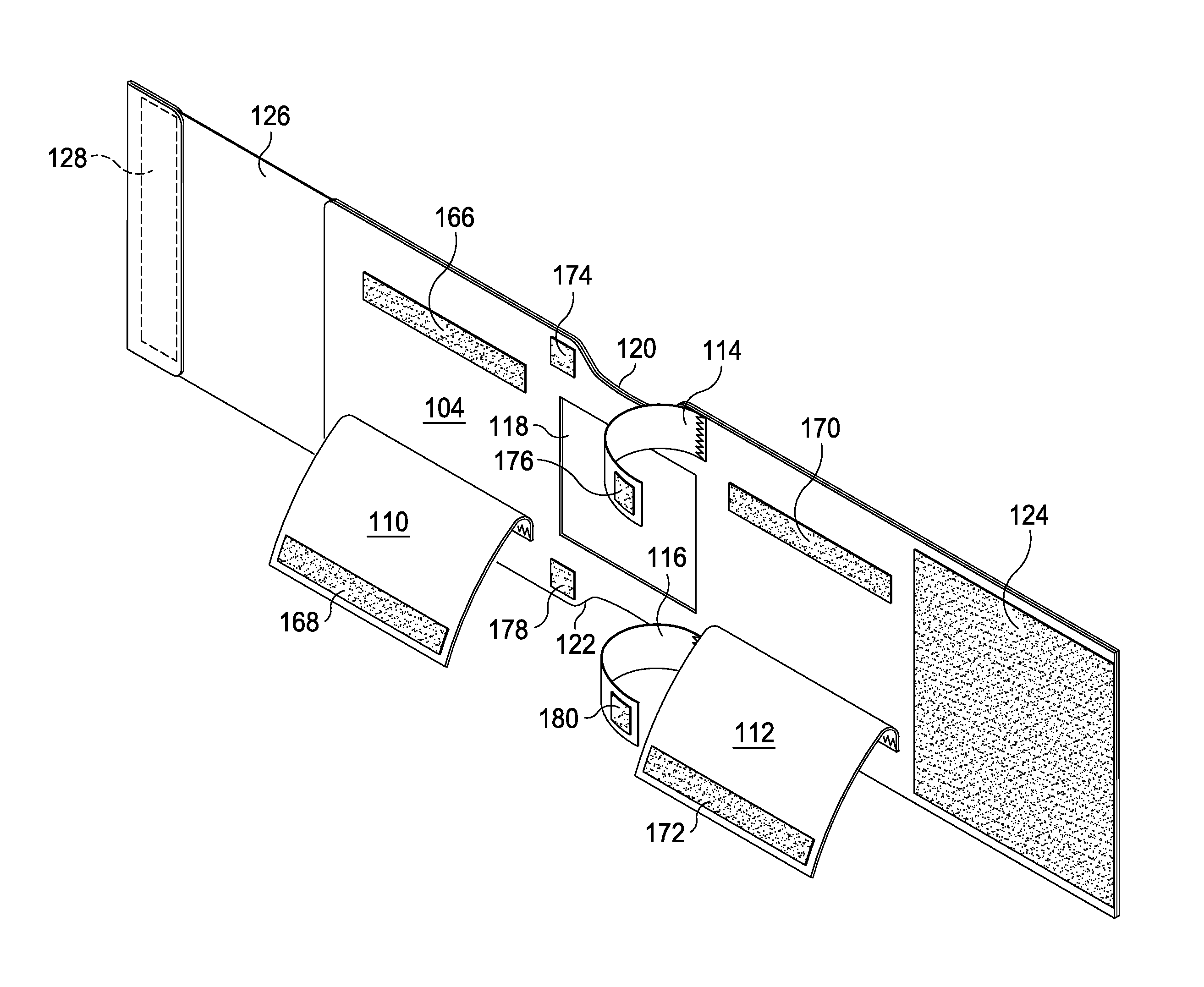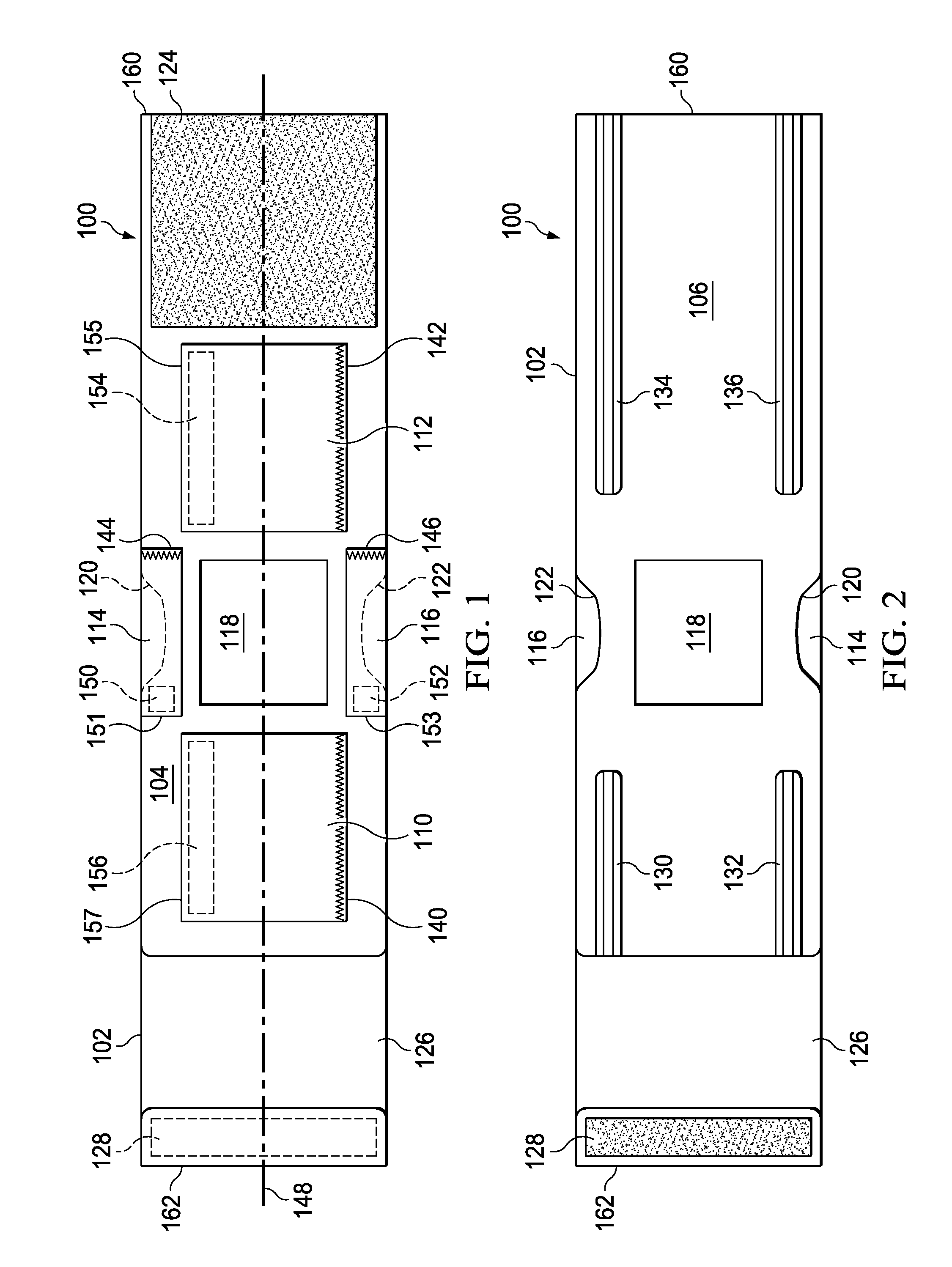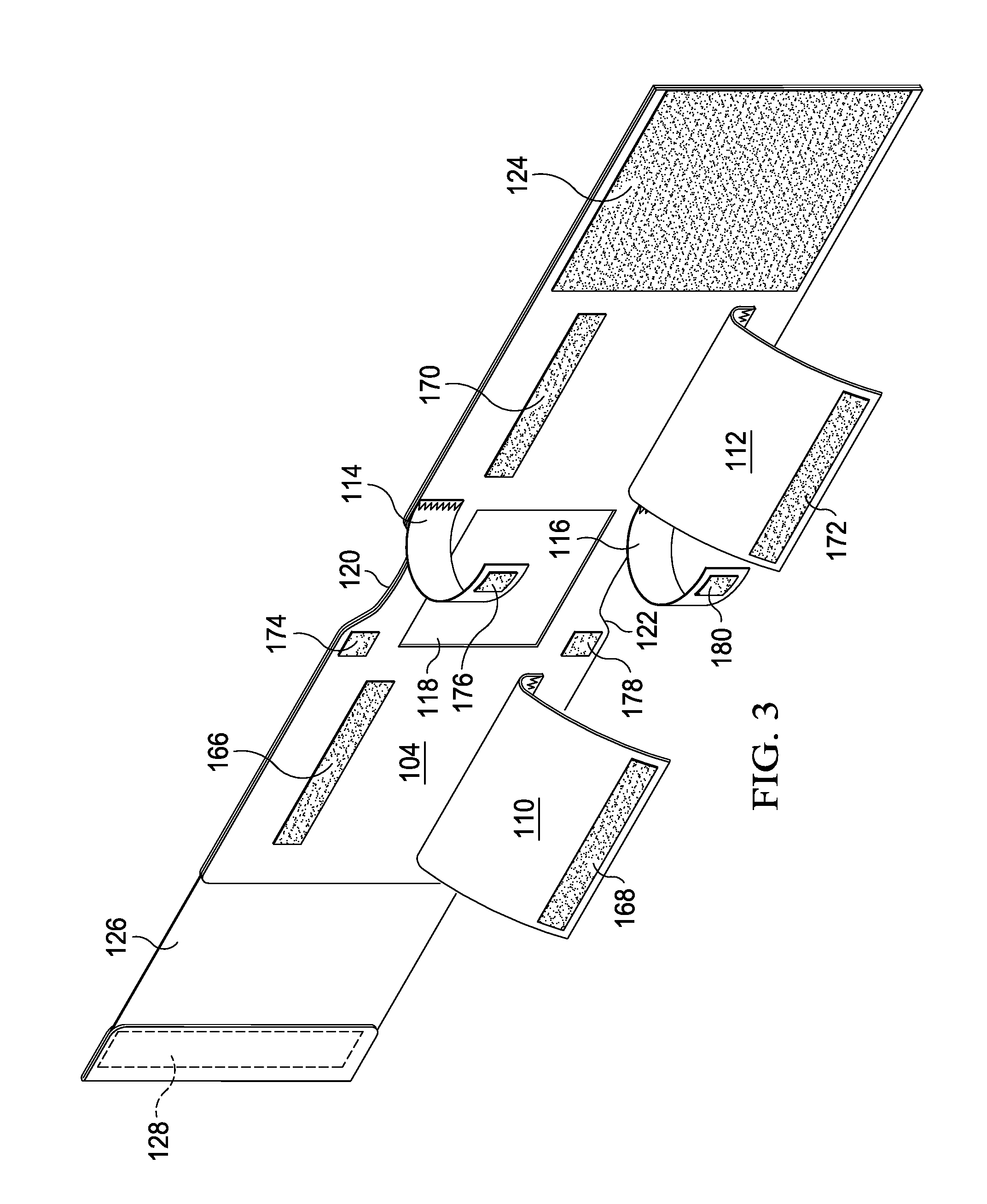Apparatus and method for controlling visibility and access to central venous access devices
a technology for access devices and apparatus, applied in the direction of catheters, other medical devices, needles, etc., can solve the problems of increasing the possibility of bloodstream infections, dislocation of intravenous tubes and lumens, and inability to adjust the position of access devices, etc., to achieve the effect of facilitating air flow and ensuring the position
- Summary
- Abstract
- Description
- Claims
- Application Information
AI Technical Summary
Benefits of technology
Problems solved by technology
Method used
Image
Examples
Embodiment Construction
[0023]In the descriptions that follow, like parts are marked throughout the specification and drawings with the same numerals, respectively. The drawing figures are not necessarily drawn to scale and certain figures may be shown in exaggerated or generalized form in the interest of clarity and conciseness.
[0024]Referring to FIGS. 1 and 2, device 100 is comprised of a two-sided, layered, flexible body 102 having exterior surface 104 and interior surface 106. Body 102 is generally rectangular and symmetrical around longitudinal axis 148. Exterior surface 104 is comprised of primarily durable cotton blend material resistant to abrasion, although cotton and synthetic blends will suffice. Interior surface 106 includes a gusset comprised of a breathable, absorbent material. The interior surface may also comprise an antimicrobial material, agent or surface. In a preferred embodiment, the internal gusset is treated with Silpur Silver Antimicrobial Treatment, available from Thompson Research...
PUM
 Login to View More
Login to View More Abstract
Description
Claims
Application Information
 Login to View More
Login to View More - R&D
- Intellectual Property
- Life Sciences
- Materials
- Tech Scout
- Unparalleled Data Quality
- Higher Quality Content
- 60% Fewer Hallucinations
Browse by: Latest US Patents, China's latest patents, Technical Efficacy Thesaurus, Application Domain, Technology Topic, Popular Technical Reports.
© 2025 PatSnap. All rights reserved.Legal|Privacy policy|Modern Slavery Act Transparency Statement|Sitemap|About US| Contact US: help@patsnap.com



